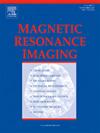脑血管病患者脑白质自发活动异常
IF 2
4区 医学
Q2 RADIOLOGY, NUCLEAR MEDICINE & MEDICAL IMAGING
引用次数: 0
摘要
脑血管病(CSVD)是一种由脑内小血管病变引起的神经系统疾病。CSVD患者白质(WM)功能的异常变化尚不清楚。因此,本研究的目的是通过测量低频波动幅度(ALFF)来研究CSVD患者WM的异常功能。包括23例CSVD患者和22例年龄和性别匹配的健康对照(hc)。基于静息状态功能磁共振成像(rs-fMRI)数据,采用ALFF方法研究两组WM自发性脑活动的变化。提取改变后的ALFF值作为分类特征,采用线性支持向量机(linear support vector machine, SVM)识别CSVD患者。CSVD患者胼胝体(BCC)和胼胝体膝(GCC)的ALFF值低于hc,胼胝体脾(SCC)、右侧后辐射冠(PCR.R)和左侧扣带回(CGG.L)的ALFF值高于hc。SVM模型准确率为82.22%,曲线下面积(AUC)为0.88。本研究揭示了CSVD患者WM ALFF值的改变,为CSVD患者的认知和步态障碍以及脑代偿机制提供了证据。我们的研究结果提示WM自发性脑活动异常可能与CSVD的病理生理机制有关,为CSVD的诊断提供了潜在的成像生物标志物。本文章由计算机程序翻译,如有差异,请以英文原文为准。
Abnormal spontaneous brain activity of white matter in patients with cerebral small vessel disease
Cerebral small vessel disease (CSVD) is a nervous system disease caused by small vessel lesions in the brain. The abnormal changes in white matter (WM) function in patients with CSVD remained unclear. Therefore, the purpose of this research was to study the abnormal function of WM in patients with CSVD by measuring the amplitude of low-frequency fluctuations (ALFF). Twenty-three patients with CSVD and 22 healthy controls (HCs), age- and sex-matched, were included. Based on the resting-state functional magnetic resonance imaging (rs-fMRI) data, the ALFF method was used to investigate alterations in spontaneous brain activity in WM between the two groups. The altered ALFF values were extracted to serve as classification features, and the linear support vector machine (SVM) was adopted to identify patients with CSVD. patients with CSVD displayed decreased ALFF values in the body of corpus callosum (BCC) and genu of corpus callosum (GCC) and increased ALFF values in the splenium of corpus callosum (SCC), right posterior corona radiata (PCR.R) and left cingulate gyrus (CGG.L) than HCs. The SVM model achieved an accuracy of 82.22 % and the area under the curve (AUC) was 0.88. This study revealed altered ALFF values of WM in patients with CSVD, which provides evidence for cognitive and gait disorders, as well as brain compensatory mechanisms in patients with CSVD. Our findings suggest that spontaneous brain activity abnormalities in WM may be connected with the pathophysiological mechanism of CSVD, providing potential imaging biomarkers for CSVD diagnosis.
求助全文
通过发布文献求助,成功后即可免费获取论文全文。
去求助
来源期刊

Magnetic resonance imaging
医学-核医学
CiteScore
4.70
自引率
4.00%
发文量
194
审稿时长
83 days
期刊介绍:
Magnetic Resonance Imaging (MRI) is the first international multidisciplinary journal encompassing physical, life, and clinical science investigations as they relate to the development and use of magnetic resonance imaging. MRI is dedicated to both basic research, technological innovation and applications, providing a single forum for communication among radiologists, physicists, chemists, biochemists, biologists, engineers, internists, pathologists, physiologists, computer scientists, and mathematicians.
 求助内容:
求助内容: 应助结果提醒方式:
应助结果提醒方式:


